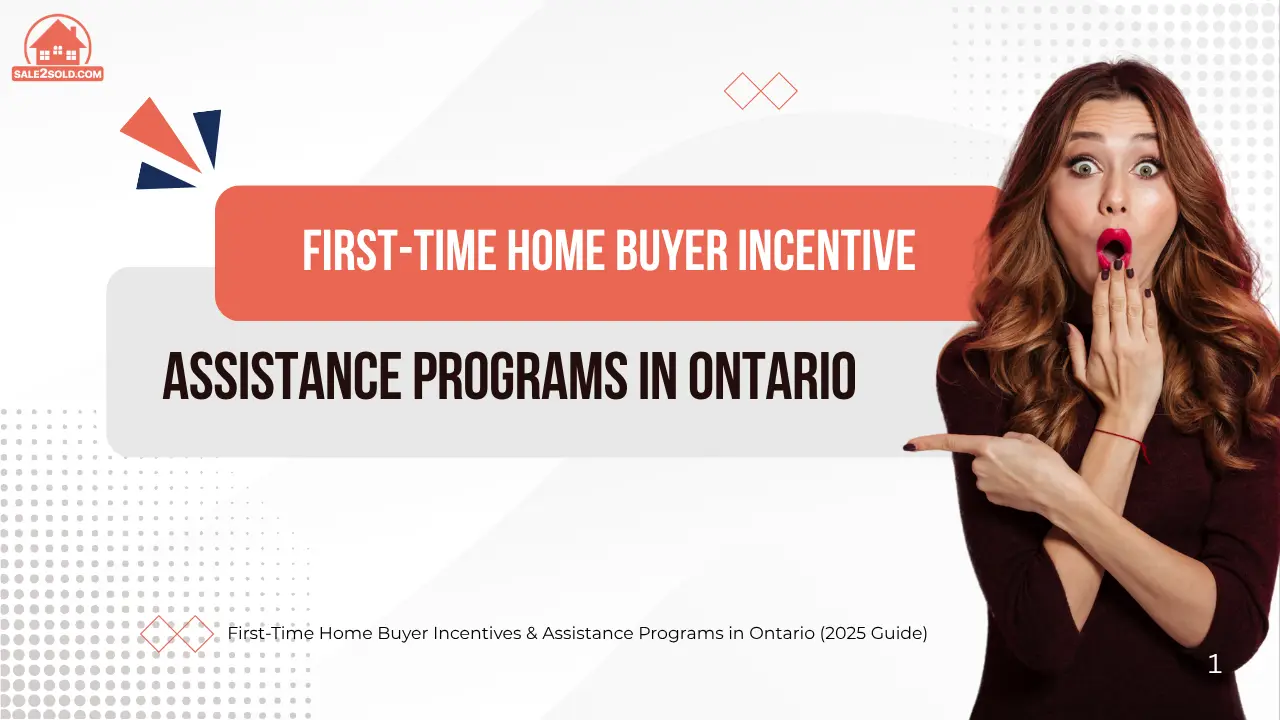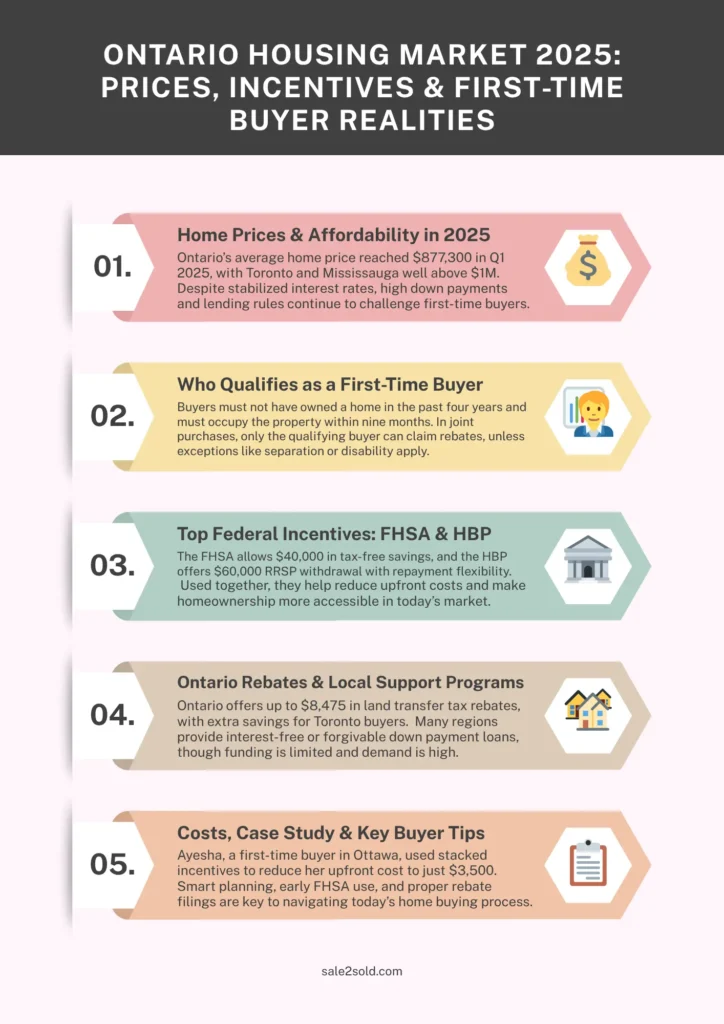First-Time Home Buyer Incentive & Assistance Programs in Ontario (2025 Guide)


Table of Contents
Toggle
Buying your first home in Ontario remains a major financial challenge in 2025. With average property values sitting at $877,300 across the province (Toronto surpassing $1.1 million), affordability continues to be a concern for new buyers. However, several provincial, municipal, and federal home buyer incentive programs exist to ease the burden of home ownership.
This guide breaks down every available home buyer incentive and first time program in Ontario as of 2025 what’s available, how to qualify, and how much you can save.
Ontario average home price (Q1 2025): $877,300
Toronto average price: $1.13M
Mississauga: $996,000
Ottawa: $733,000
Interest rates have stabilized around 5.25%, but tighter lending rules remain. High down payments and land transfer taxes are top barriers. That’s where a home buyer incentive can make a meaningful difference, reducing upfront costs and increasing affordability for many.
More than 52% of first time buyers in Ontario in 2024 received financial help from family, and many are relocating outside the GTA in search of affordability even with the availability of multiple home buyer incentive tools.
You’re considered a first time buyer if:
You haven’t owned a home in the past 4 years
You’re a Canadian citizen or permanent resident
You plan to live in the home within 9 months
Exceptions apply. Even in unique situations such as divorce or buying for a dependent, you may still be eligible for a home buyer incentive.
In joint ownership scenarios, only the qualifying buyer can access rebates or credits. If your co buyer doesn’t qualify, you’ll receive partial benefits from the home buyer incentive programs.
Withdraw up to $60,000 tax free
Couples: Up to $120,000 combined
Repay over 15 years
As a flagship home buyer incentive, the HBP is widely used to reduce financial strain at closing. In 2023, more than 80,000 Canadians took advantage of this.
$8,000 annual limit, $40,000 lifetime
Tax deductible contributions
Tax free withdrawals for home purchases
This new home buyer incentive became available in 2023 and is growing rapidly in popularity. Transferring RRSP savings to an FHSA is also possible with no tax consequences.
If you’re buying a new construction home under $450,000, this federal home buyer incentive can save you thousands. Even higher priced properties may qualify for partial provincial rebates.
Max refund: $4,000
Applies to homes under $368,000
As a home buyer incentive, this refund is credited directly at closing. It’s one of the first rebates your lawyer will apply for.
Non refundable credit worth $750
Claimed during tax filing
A small yet useful home buyer incentive to help offset purchase related costs.
Additional $4,475 refund for eligible buyers
Combined with provincial = $8,475
This home buyer incentive is exclusive to Toronto, where housing costs remain some of the highest in the country.
Many municipalities offer forgivable loans or down payment assistance. These home buyer incentive programs are often limited in funding and come with income and purchase price caps.
| Region | Program Type | Max Price | Assistance | Income Limit |
|---|---|---|---|---|
| Simcoe | 10% loan | $593,879 | ~$59,387 | $103,200 |
| Waterloo | 5% loan | $506,000 | ~$25,300 | $101,300 |
| Kingston | Forgivable loan | $440,000 | ~$44,000 | $94,000 |
| Dufferin | Interest-free | $609,118 | ~$60,911 | $132,000 |
Applying early is crucial, as these home buyer incentive options tend to run out quickly each year.
This federal home buyer incentive ended in March 2024. It provided a shared equity loan but was phased out due to limited interest. It’s now replaced by more practical tools like FHSA and HBP.
Under $500K: 5% minimum
$500K to $999K: 5% first $500K + 10% on remainder
$1M+: 20% required
For buyers contributing under 20%, mortgage insurance applies. A home buyer incentive can help cover the shortfall and reduce how much you need to borrow.
$5,000 credit = $750 refund
Up to $7,500 refund for modifying a home for extended family
These tax based home buyer incentive options are often underutilized but can bring real savings, especially when paired with physical renovations.
Skipping the FHSA assuming RRSP is enough
Missing limited regional home buyer incentive windows
Not budgeting for taxes and legal fees
Choosing a lawyer unfamiliar with rebate applications
Each home buyer incentive comes with its own rules. Missteps can cost thousands if paperwork isn’t filed properly or on time.
Name: Ayesha, 29
Home: $530,000 new build condo
Incentives Used:
FHSA: $32,000
HBP: $20,000
Ontario LTT refund: $4,000
HBTC: $750
Total benefit from home buyer incentive programs: ~$56,750
Out of pocket down payment: ~$3,500
Without these supports, Ayesha would’ve needed over $30,000 upfront. The right combination of home buyer incentive programs made homeownership possible.
Your lawyer and real estate agent play a key role in coordinating rebates and incentives. Be sure they’re familiar with every home buyer incentive available in your area.